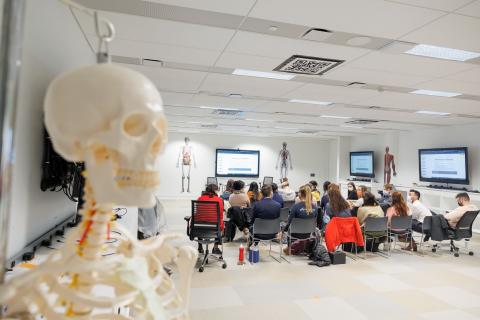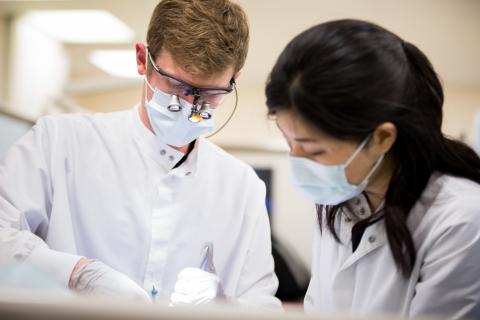
What is Our Mission?
Our mission is that all CWRU faculty, staff and students as well as our university’s affiliates achieve higher impact through effective teamwork. Within the Office of the Provost, our Office’s purview spans the eight Schools at CWRU as well as more than 40 affiliates and partners, including Cleveland Clinic, University Hospitals and many others.
Why focus on teamwork?
Teams are defined as “two or more people who interact dynamically, interdependently, and adaptively toward a common and valued goal, have specific roles or functions, and have a time-limited membership” (TeamSTEPPS 2.0). Whereas many equate “teams” with “groups,” teams are distinguished from groups because teams are interdependent, and effective teams are able to achieve much more than simply the sum of the contributions of the individual members on the team. It is estimated that at least 85% of work is completed in teams. Teamwork and collaboration is consistently identified as one of the most essential skills that employees need according to the National Association of Colleges and Employers Job Outlook annual survey.

Despite the prevalence of teams throughout all areas of work, very few students, staff, employees, faculty and other workers receive formal instruction on how to be more effective in their teamwork efforts. Our office seeks to address this gap by offering formal coursework on teamwork skills, sponsoring network-building interdisciplinary and interprofessional events, and providing team consultation and coaching services.
What are Interdisciplinary and Interprofessional Teams?
An interdisciplinary team is comprised of individuals from various disciplines who are working together in a diverse team to address a problem. This diversity of perspectives, if adequately managed, creates the potential for remarkably innovative solutions, and heterogeneous teams have a much greater potential for successful innovations than homogenous teams.

Interprofessional education (IPE) is a term used most commonly in healthcare. The World Health Organization defines states that IPE occurs “when students or members of two or more professions learn with, from, and about each other to enable effective collaboration and improve health outcomes.” Similarly, an interprofessional collaborative practice team is “multiple health workers from different professional backgrounds working together with patients, families, care givers, and communities to deliver the highest quality of care.” For example, a nurse practitioner, pharmacist, physician assistant, and social work may work together in an interprofessional team on an inpatient unit. Similarly, a nurse, physician, psychologist, occupational therapist, physical therapist, speech-language pathologist, behavior analyst, and child life specialist may work together to provide care and services to children with intellectual and developmental disabilities and their families.
Teams and teamwork are particularly important in health care, and every health professions and social work accreditation body requires that interprofessional education and collaborative practice is included in each program’s core curriculum.
In addition, research shows that team-based health care leads to better outcomes and satisfaction among patients — and more fulfillment for those providing it.
Why Interdisciplinary and Interprofessional Education at CWRU?

Case Western Reserve University has a long history of leadership in educational innovation, with the curriculum of its medical school touted among the nation's best in Abraham Flexner's renowned 1910 report.
More than 100 years later, that spirit continues today. The Office for Interprofessional and Interdisciplinary Education and Research is building on more than a decade of interprofessional teaching experience to health professions and social work students to create innovative interdisciplinary and interprofessional opportunities for students, faculty and staff within the College of Arts and Sciences as well as the other seven Schools at our university.

